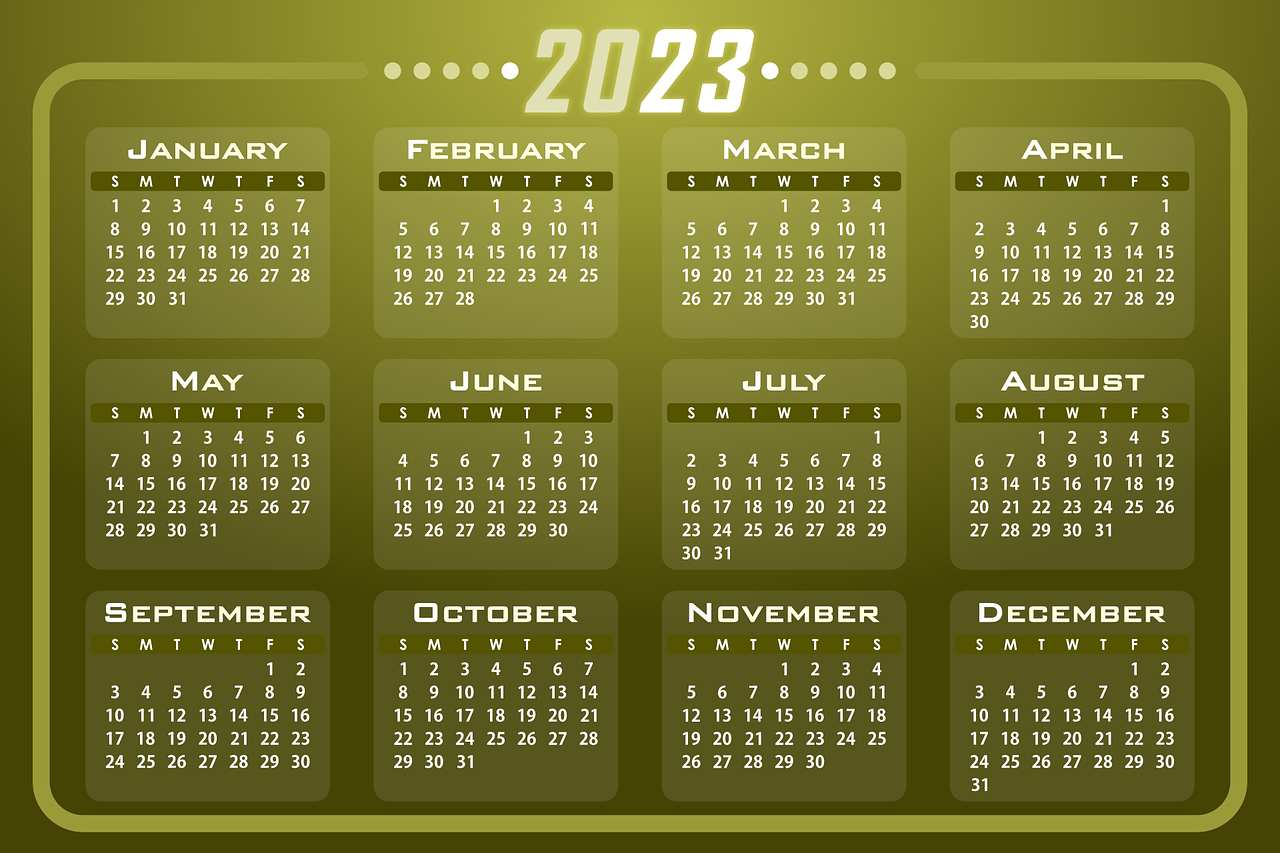1873(明治6)年から使われている太陽暦の「グレゴリオ暦」(2023年は改暦150周年)
この時、時間も昼夜12時間ずつ、1日24時間と決められた。
基本的に、アラビア数字と七曜(曜日)で構成される。
1872(明治5)年までは、編纂や改暦を経ながら約1300年ものあいだ「旧暦」が使われた。

Gregorian calendar, a solar calendar used since 1873 (Meiji 6) (2023 is the 150th anniversary of the calendar reform)
At this time, time was also set at 24 hours per day, with 12 hours each day and night.
It basically consists of Arabic numerals and Shichiyo (days of the week).
Until 1872 (Meiji 5), the “old calendar” was used for approximately 1,300 years, undergoing revisions and revisions.
コラム/Column
1872(明治5)年11月9日の布達(官報)によって「12月3日を明治6年1月1日とし、太陽暦を実施すること」が発表されました。
発表から実施まで約3週間。すでに新年の暦も印刷されており、かなり慌ただしい改暦です。
財政難だった新・明治政府が「月給制だった役人たちへの給与を節約するため、改暦を急いだ」という説もあるくらいです。
On November 9, 1872 (Meiji 5), a notification (official gazette) announced that December 3 would be January 1, Meiji 6, and that the solar calendar would be implemented.
It took about 3 weeks from announcement to implementation. The new year’s calendar has already been printed, making it a rather hectic calendar change.
There is even a theory that the new Meiji government, which was in financial trouble, “hurried to change the calendar in order to save on salaries for government officials who had been on a monthly salary system.”

